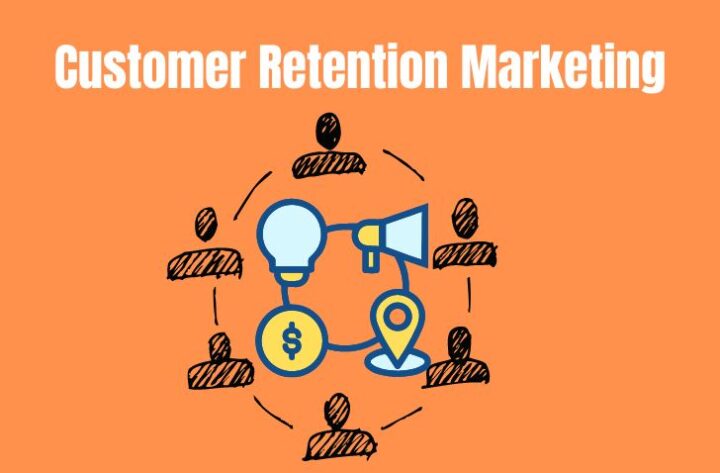Retaining existing customers is the key to business longevity. Explore the mastery of retention marketing in our blog, where we share effective techniques to keep your customers loyal, satisfied, and coming back for more. Unlock the art of customer retention and fuel your business growth.
What Is Customer Retention Marketing?
Customer retention marketing refers to the strategies and techniques used by businesses to encourage existing customers to continue buying from them. It focuses on nurturing and strengthening the relationship with customers, providing value, personalized experiences, and incentives to keep them satisfied and loyal. By investing in customer retention, businesses can boost customer lifetime value, increase revenue, and create a loyal customer base that becomes advocates for their brand.
Advantages of performing Retention Marketing for the Long Run
Retention marketing is not just about keeping existing customers happy; it also brings significant long-term advantages to businesses. Here are the key benefits of retention marketing and how they contribute to sustained success.
-
Customer Loyalty
Retention marketing cultivates customer loyalty, leading to repeat purchases and an ongoing relationship with your brand. Loyal customers not only continue to buy from you but also become advocates, spreading positive word-of-mouth and contributing to your brand’s reputation.
-
Increased Customer Lifetime Value (CLV)
Retaining customers over an extended period increases their lifetime value. Loyal customers tend to make more frequent purchases and spend more money on your products or services. By focusing on retention, you can maximize the revenue generated from each customer throughout their entire relationship with your business.
-
Lowers Acquisition Costs
Acquiring new customers can be costly due to marketing expenses and the efforts required to convert prospects. Retention marketing mitigates these costs by reducing the need for constant acquisition. By keeping existing customers engaged and satisfied, you can allocate resources more efficiently and achieve a higher return on investment.
-
Word-of-Mouth Referrals
Satisfied customers are more likely to recommend your brand to others, leading to valuable word-of-mouth referrals. Positive recommendations from loyal customers carry significant weight and can generate new business at a lower cost compared to traditional marketing efforts.
-
Higher Conversion Rates
Existing customers are already familiar with your brand, products, and services, making them more receptive to future marketing campaigns. They have a higher likelihood of converting compared to new prospects. By leveraging your existing customer base through retention marketing, you can enjoy higher conversion rates and drive revenue growth.
-
Improved Customer Insights
Retention marketing involves building strong relationships with customers, allowing you to gain valuable insights into their preferences, behaviors, and needs. This data enables you to personalize your marketing efforts, tailor offers to specific segments, and provide a better overall customer experience. By understanding your customers on a deeper level, you can continuously optimize your strategies and drive better business outcomes.
Types of Retention Marketing Techniques
Let’s explore different types of retention marketing techniques that businesses can implement to strengthen customer relationships and drive long-term loyalty.
-
Personalized Communication
Personalized communication involves tailoring messages and offers based on individual customer preferences, behaviors, and purchase history. By delivering relevant and targeted content through various channels, such as email, social media, or personalized landing pages, businesses can create a more engaging and personalized experience for customers, fostering a sense of connection and loyalty.
-
Loyalty Programs
Loyalty programs incentivize customers to continue purchasing from a business by offering exclusive rewards, discounts, or special privileges. These programs not only encourage repeat purchases but also strengthen the emotional bond between the customer and the brand. By providing tangible benefits and acknowledging customer loyalty, businesses can increase customer retention and lifetime value.
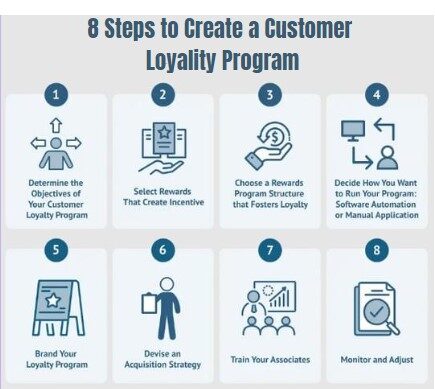
-
Customer Segmentation
Customer segmentation involves dividing the customer base into distinct groups based on shared characteristics, such as demographics, behavior, or purchase patterns. By segmenting customers, businesses can create targeted marketing campaigns and personalized experiences for each group. This approach ensures that customers receive relevant and tailored communication, increasing their engagement and satisfaction.
-
Retargeting Campaigns
Retargeting campaigns involve displaying ads or personalized content to customers who have previously interacted with a business but have not completed a desired action, such as making a purchase or subscribing to a service. By re-engaging these customers with targeted messages across different platforms, businesses can remind them of their interests, provide additional incentives, and increase the likelihood of conversion.
-
Customer Onboarding
Customer onboarding focuses on providing a seamless and positive experience for new customers. This involves guiding them through the initial stages of using a product or service, addressing their questions or concerns, and highlighting key features and benefits. Effective onboarding establishes a strong foundation for a long-term relationship, increasing customer satisfaction and reducing churn.
-
Email Marketing
Email marketing remains a powerful retention tool, allowing businesses to deliver targeted and personalized messages directly to customers’ inboxes. By providing valuable content, exclusive offers, and updates on new products or services, businesses can nurture customer relationships, encourage repeat purchases, and keep their brand top of mind.
-
Customer Feedback and Surveys
Collecting customer feedback and conducting surveys helps businesses understand customer needs, preferences, and satisfaction levels. By actively seeking input, businesses can identify areas for improvement, address customer concerns, and make necessary adjustments to enhance the overall customer experience. This feedback-driven approach demonstrates a commitment to customer satisfaction, builds trust, and strengthens loyalty.
How to Create an Effective Retention Marketing Strategy
Creating an effective retention marketing strategy is crucial for businesses to maintain and grow their customer base. Below are the key steps and tactics that can help businesses develop a robust retention marketing strategy to keep customers engaged and loyal.
-
Determine your churn rate
Calculate the churn rate by dividing the number of customers who stopped using your product or service within a specific period by the total number of customers. This metric helps you understand the scale of customer attrition and identify areas for improvement in your retention strategy.
-
Make a User Journey Map
Visualize the entire customer journey, mapping out each touchpoint from initial contact to post-purchase engagement. Identify key interactions where customers may be at risk of churning and optimize those moments to provide a seamless and engaging experience.
-
Focus on the first purchase experience and onboarding to begin
Create a positive impression from the start by delivering a seamless onboarding process and exceptional support. A smooth transition from prospect to customer builds trust and sets the stage for long-term engagement and loyalty.
-
Use behavior analysis tools
Leverage analytics and behavior-tracking tools to gain insights into customer actions and preferences. Analyze patterns and behaviors that indicate potential churn risks or opportunities for upselling. This data-driven approach allows you to tailor your retention efforts based on individual customer needs and behavior.
-
Create personalized customer communications using data
Utilize customer data to deliver targeted and personalized communications. Segment your customer base and craft tailored messages that resonate with their specific needs and preferences. Personalization builds stronger connections with customers, fostering loyalty and increasing the likelihood of repeat purchases.
-
Implement an easy way to collect feedback from your customers
Actively seek feedback from your customers through surveys, reviews, or feedback forms. This provides valuable insights into their satisfaction levels, pain points, and areas for improvement. Act on this feedback promptly to address concerns, resolve issues, and continuously enhance the customer experience.
-
Customer Retention Metrics To Track Your Progress
Once you have mastered customer retention strategies, evaluating your efforts is essential. By measuring the appropriate customer retention metrics, you can assess strengths and areas for improvement, allowing you to refine and enhance your strategies effectively.
Here’s how to calculate each of these customer retention metrics:
-
Revenue churn rate
-Identify the total revenue generated from customers during a specific period.
-Determine the revenue lost from customers who churned during the same period.
-Divide the revenue lost by the total revenue generated and multiply by 100 to get the revenue churn rate as a percentage.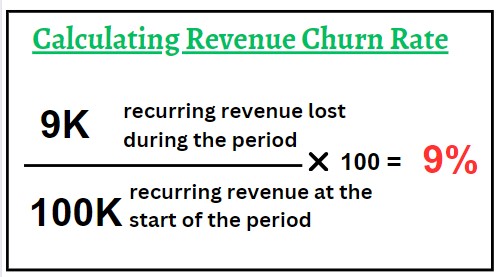
-
Customer churn rate
-Count the number of customers who have churned during a given period.
-Determine the total number of customers at the beginning of that period.
-Divide the number of churned customers by the total number of customers and multiply by 100 to calculate the customer churn rate as a percentage.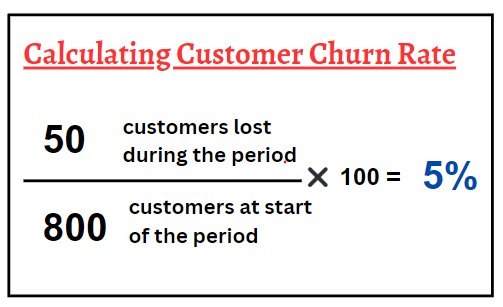
-
Repeat purchases
-Track the number of customers who make more than one purchase within a specified timeframe.
-Divide the number of customers who made repeat purchases by the total number of customers and multiply by 100 to obtain the repeat purchase rate as a percentage.
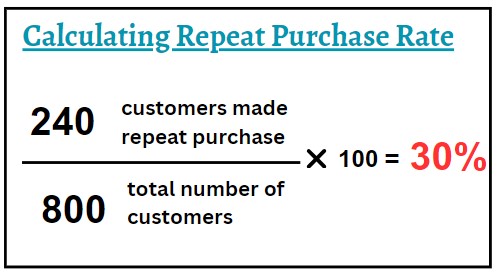
Conclusion
Establishing a successful business requires more than just a great concept; it demands the ability to generate consistent profits. Retention marketing plays a pivotal role in nurturing a loyal customer base that actively supports your brand, ensuring a steady flow of revenue.
However, it is important to note that relying solely on retention marketing is not sufficient for sustained business growth. In addition to effective customer retention strategies, acquiring new customers is equally crucial for expanding your customer base.
At 1702 Digital, we understand the significance of both aspects, and that’s why we provide comprehensive digital marketing solutions. Our services aim to enhance customer retention and facilitate customer acquisition, enabling your business to thrive and achieve long-term success.

